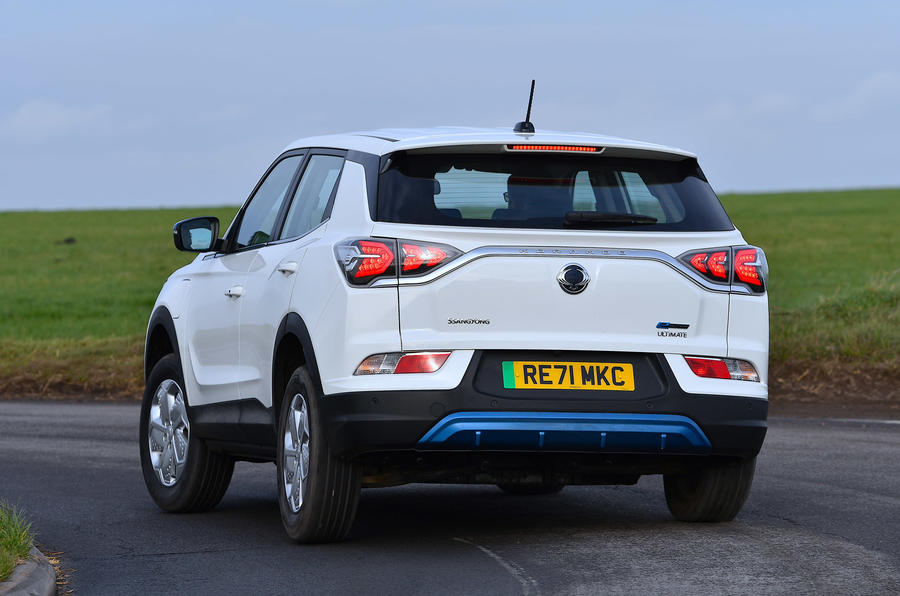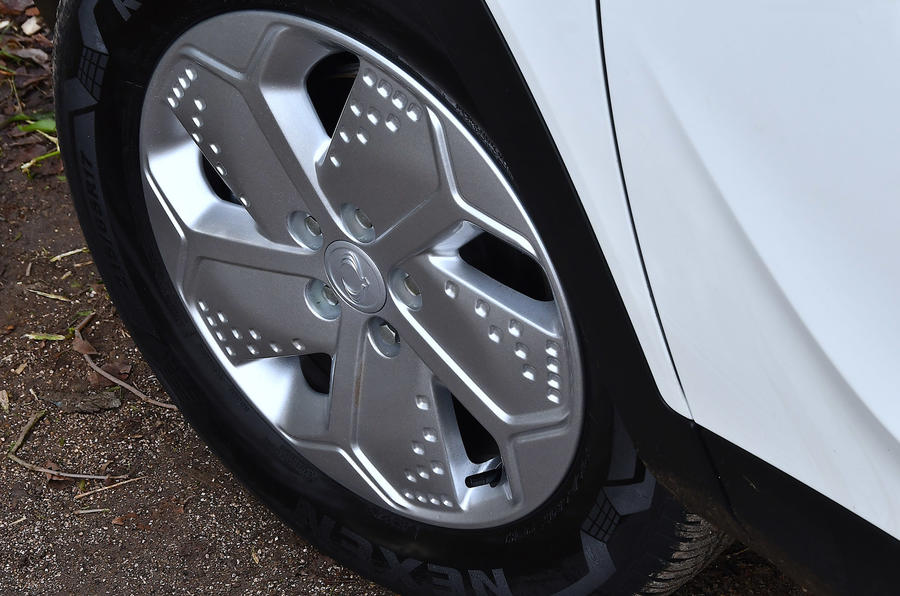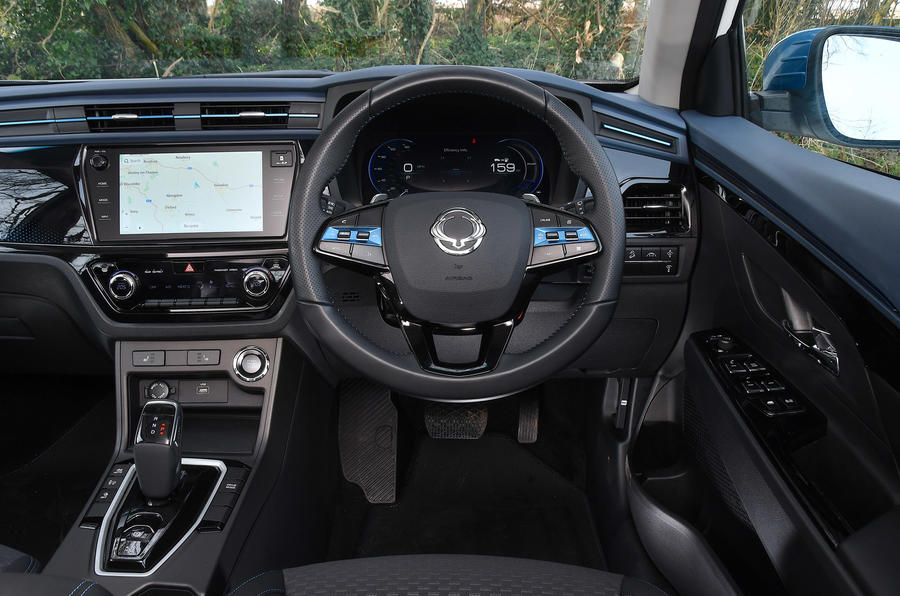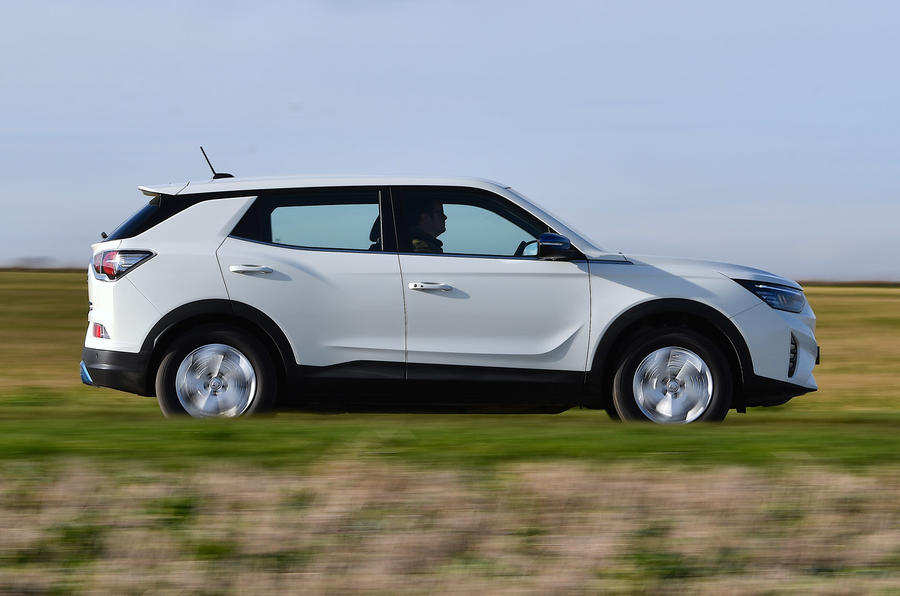2022 Ssangyong Korando e-Motion Review – Automotive Daily
Full-sized electric crossover from Ssangyong is bit unsophisticated and unappealing, but well equipped and practical.
Genuine value has been hard to find in the market for electric cars, but it’s coming. Manufacturers have insisted that battery technology is expensive, production volumes are prohibitive and so profit margins are wafer-thin – but, gradually, all that’s changing. MG Motor has already been showing growing numbers of Australian buyers how affordable electric cars can be. Soon enough, Ssangyong might be doing exactly the same thing, with this e-Motion under consideration, and more new models in the pipeline.
The Korean SUV-specialist brand (its name translates as ‘double dragon’, which might only make it cooler to one-time owners of a Sega Master System, but it worked on me) has recently been bought out of bankruptcy by a consortium of private-equity investors. With plans to have a four-strong range of electric models, from crossovers and proper off-roaders to pick-up trucks, it is all set to introduce its first EV this year to Europe: the Ssangyong Korando e-Motion. We grabbed a drive to see what it is like, and how it might fare in the Australian market.

This Korando will enter the same segment inhabited by the likes of the Skoda Enyaq, Kia e-Niro, and new Nissan Ariya in right-hand drive first for the UK. But this medium-sized family crossover will be priced from £30,495 (AUD$56,000) which should be between 10 and 30 per cent less than you’ll pay for any of those alternatives. As a way of comparison, the MG ZS EV is priced at the equivalent of $54,000 in the UK and costs $44,000 drive away in Australia, so a potential circa-$45,000 driveaway for the Korando e-Motion here would be an attractive price.
The electric Korando uses the same vehicle platform as the combustion-engined car, but it isn’t a particularly low-ball, bargain-basement technical offering in other respects. It has a drive battery worth a nominal 61.5kWh, which is a good deal bigger than you’ll find on similarly priced crossover EVs; and, despite its size and weight, it has a very respectable WLTP-certified electric range of 339km. Performance is strong too, with a 140kW and 360Nm drive motor powering the front axle.

Rapid charging potential at up to 100kW is competitive for the money, also, while equipment level are surprisingly bountiful. Entry-grade ELX-trim cars get digital instruments, a touchscreen infotainment system with smartphone mirroring, intelligent adaptive cruise control and a full array of active safety and driver assistance systems for no extra cost. A mid-level model like our test car (which was badged ‘Ultimate’) adds LED headlights, heated front seats, a TomTom navigation system and some other items.
It doesn’t take long to appreciate where this car offers what you might expect for the money, and where it doesn’t. Like every manufacturer boldly going electric for the first time, Ssangyong has picked a slightly wide-eyed, attention-grabbing styling theme for the e-Motion version – and its bold colours just don’t sit comfortably on the Korando’s self-consciously blocky body. The car’s newly sealed front grille only adds to the weirdness, and its standard-fit 17-inch alloy wheels look downright cheap. Avoiding bright white paintwork might soften the car’s visual aberrance, but I’m not sure it could banish it entirely.

On the inside, things look up. Passenger space is generous enough to make this a car fit to carry four full-sized adults or a growing family of five quite comfortably, and boot space is a very fulsome 551 litres. The cabin is fitted out with a lot of pretty cheap glossy plastics, but they’re certainly not entirely plain or universally unappealing. The controls are laid out sensibly and intuitively, the instruments are clear enough and seat comfort is good.
The Korando e-Motion drives competently, with the low cabin noise level, accessible instant torque and ease of operation you’d hope for in an EV – although it’s more rough-hewn in some dynamic respects. The car’s Nexen economy tyres don’t have a particularly assured grip level, but its electronic traction and stability controls keep close tabs on drive forces to maintain secure drivability. You only unearth any power understeer or torque steer with the systems switched off – and, having done so, you switch them back on again pretty promptly.
Steering is weighty and medium-paced; like the slightly dulled throttle response, it makes a big car drive coherently, at least. Body control comes over all old-school off-roader when cornering, though, and ride comfort feels a bit crude when the road turns bumpy.

The Korando’s ride and handling are far from good, then – but equally far from offensively bad, if you can content yourself with the car’s big-picture selling points.
For its size and practicality, the genuine 320km range (which we verified in mixed use, and at a pretty chilly ambient temperature at that), its handsome (actually, let’s call it generous) equipment level, and the fact that all of that comes for a price you can compare favourably with a lot of petrol-powered SUV rivals, the Korando e-Motion is worth its place in Ssangyong’s offering. There are markedly better-driving and more desirable full-size crossover SUVs than this, of course – but they’ve all got much steeper price tags to match.
Matt Saunders















![Toni Kroos là ai? [ sự thật về tiểu sử đầy đủ Toni Kroos ]](https://evbn.org/wp-content/uploads/New-Project-6635-1671934592.jpg)


